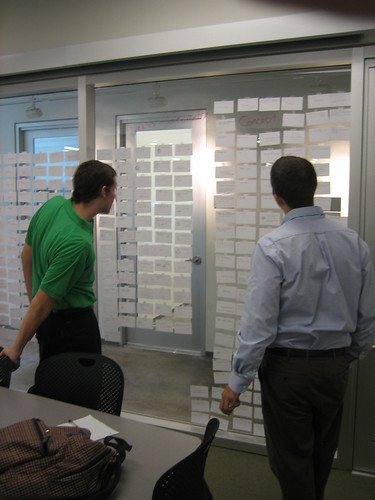Our team recap of the Rice Alliance Life Science Technology Venture Forum generated several discussion points. Here’s a brief transcript that highlights the personal observations about the Technology Venture Forum.
What was one thing you learned from attending the Rice Alliance Life Science Technology Venture Forum?
Caleb Brown: Venture Capital (VC) firms fund companies at different stages of the growth process. Finding the right VC is important including knowing what types of deals they are interested in or ones they would not waste their time/capital on.
Rhodes Coffey: I learned what an angel is: a venture capitalist individual or group that supports start-ups that are in their very early stages of development. One such example is the Houston Angel Network that supports start-up companies.
What distinguished the good companies from the bad?
Kristi Day: One of the best companies was iShoe because I actually remember the name, what the company does, and the presentation. The name suggests what the product pertains to, so it’s not vague and forgettable. The presentation was easy to listen to, and kept my attention.
The worst? I don’t remember. I completely forgot the name, their product, their service, etc. They blended in, seemed the same as all the others.
Nicole Garcia: iShoe was definitely the best company that presented. She mentioned everything in a fast, clear and knowledgeable manner, as well as display the confidence in her presentation which represents the confidence that her company has in their product.
What new perspective did you gain about business plans/elevator pitches or creating a business?
Rhodes Coffey: New perspective about business plan/elevator pitch: Presentation matters more than content, time is of the essence, Present the most important things now and discuss later—capture the VC’s interest and elaborate later
Kristi Day: I realized that being able to relate to what they were talking about, or get a visual picture of how it works, was really important. If I had some type of mental picture of what it was or who would use it, I felt like I actually understood it to an extent.
Independent of a grasp over the technological aspects of a company, how could a pitch pique your interest?
Caleb Brown: Making slides that are visually appealing and accessible to audience members of all educational backgrounds—not just life sciences.
Kristi Day: If a clear, widespread need or demand for it was demonstrated. If it was unique and new and different, not just a slight improvement to something else.
Nicole Garcia: If the audience does not know anything about what you are selling, to make it more interesting you should simply cut the jargon.
After seeing these examples, if this summer’s program developed into a real company, what must be taken into account when pitching the company?
Caleb Brown: Let the audience know what sets your company apart from all other similar products on the market and how could your product impact the market.
Rhodes Coffey: Emphasize how this is a breakthrough technology and would gear to the available market. Discuss how this is better than previous technology, project how much money would be needed to make this profitable, discuss the marketing team in place and for the future, gear toward certain VC’s, emphasize how archaic and time-consuming the storage solutions are now and how our technology would change art conservation and storage for good.
Kristi Day: I think a wide application would need to be demonstrated. When I think of “museums” that doesn’t seem like a very large market. It would somehow have to be solving a problem that seemed like a big, widespread problem, or made it seem like people would really want it.
Nicole Garcia: For our specific project, I believe it would be best to make it a product that is needed. Emphasize the current problems in the museums, and the possible damage that no solution would lead to, as well as how this problem would effect everyone.







